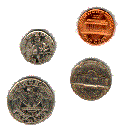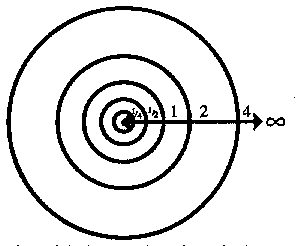THE WORK WITHIN THE WORK

E PLURIBUS UNUM
A set is a Many which allows itself to be thought of as a One.
-GEORG CANTOR
Gesammelte Abhandlungen (1883)
ZERMELO-FRAENKEL-SKOLEM
AXIOMS FOR SET THEORY
- AXIOM OF EXTENSIONALITY
Two sets are equal if and only if they have the same members.
- AXIOM OF THE NULL SET
There exists a set with no members (the empty set).
- AXIOM OF UNORDERED PAIRS
If x and y are sets, then the (unordered) pair {x,y} is a set.
- AXIOM OF THE SUM SET OR UNION
If x is a set of sets, the union of all its members is a set.
- AXIOM OF INFINITY
There exists a set x that contains the empty set, and that is such that if y belongs to x, then the union of y and {y} is also in x.
- AXIOM OF REPLACEMENT
Any property that can be stated in the formal language of the theory can be used to define the set.
- AXIOM OF THE POWER SET
There exists for each x the set y of all subsets of x.
- AXIOM OF CHOICE
If a into B is a function defined for all a in x, then there is another function f(a) for all a in x, and f(a) is also in B.
- AXIOM OF REGULARITY
No set may be a member of itself.
-PHILIP J. DAVIS & REUBEN HERSH
The Mathematical Experience (1981)
RUSSEL'S PARADOX
-DOUGLAS R. HOFSTADTER
Gödel, Escher, Bach (1979)
 The overall image he had of this activity was of two spheres, one
expanding outwards towards infinity, and the other contracting in
towards zero. The large one grew by continually doubling its
size, the smaller shrank by repeatedly halving its size ... and
they seemed to be endlessly drawing apart. But with a sudden
feeling of freedom and air, Vernor had the conviction that the two
spheres were on a direct collision course - that somehow the
sphere expanding outwards and the sphere contracting inwards
would meet and merge at some attainable point where Zero was
Infinity, where Nothing was Everything.
The overall image he had of this activity was of two spheres, one
expanding outwards towards infinity, and the other contracting in
towards zero. The large one grew by continually doubling its
size, the smaller shrank by repeatedly halving its size ... and
they seemed to be endlessly drawing apart. But with a sudden
feeling of freedom and air, Vernor had the conviction that the two
spheres were on a direct collision course - that somehow the
sphere expanding outwards and the sphere contracting inwards
would meet and merge at some attainable point where Zero was
Infinity, where Nothing was Everything.
-RUDY RUCKER
Spacetime Donuts (1981)
Thus while the eternal non-being leads toward the fathomless, the eternal being conducts to the boundary.
LAO-TZU
Tao Te Ching (604-666)


MOON
SUN


